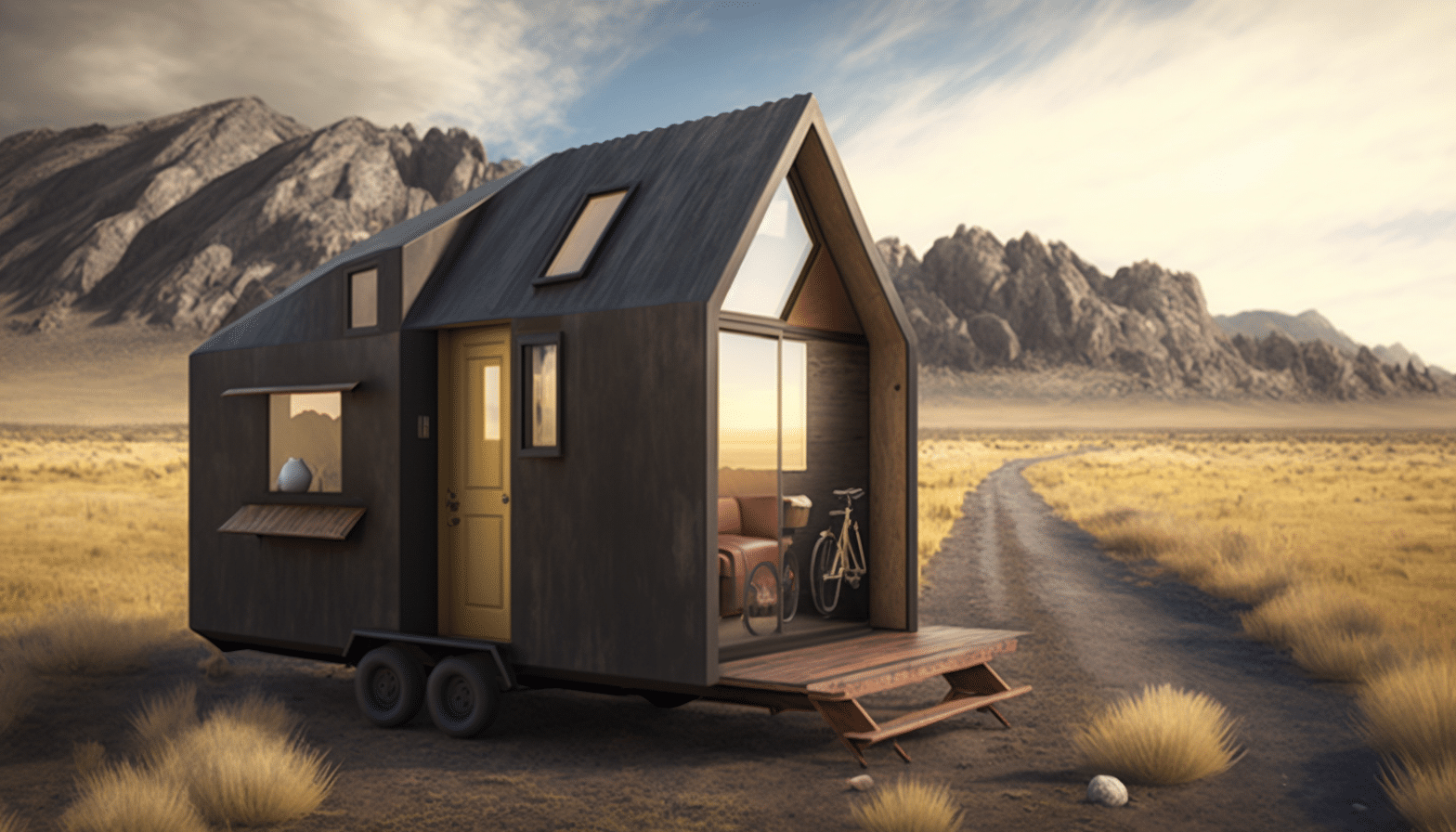Housing Crisis in The West: Our Civic Duty to Reconsider the Way We Live
Google the phrases “Housing Crisis”, “Affordability Crisis” and “Housing Affordability Crisis. You’ll turn up plenty of search results and explanations. However, you’ll find yourself at a loss for official dictionary definitions. This is very telling. As a society, we recognize these problems are real, and they’re certainly part of the common vernacular. But we still haven’t reached the point where we consider it necessary to officially document them as part of our language.
Shelter is a universal human need. It even helps form the base of American psychologist Abraham Maslow’s famous hierarchy. Humans have struggled with the basic needs of food, water, clothing and shelter since our species first emerged.
 The earliest shelters came from the earth itself. As cave dwellers, our ancient ancestors didn’t have to worry about things like inflation, gentrification or overpopulation. The closest thing to a greedy landlord they might have faced was perhaps an irate cave bear. I’ll let you decide which is worse.
The earliest shelters came from the earth itself. As cave dwellers, our ancient ancestors didn’t have to worry about things like inflation, gentrification or overpopulation. The closest thing to a greedy landlord they might have faced was perhaps an irate cave bear. I’ll let you decide which is worse.
But in all seriousness, it is truly incredible to see how our notion of basic shelter has evolved over thousands of years. This is especially true in developed and developing nations. Many of the amenities we’ve come to expect were considered the height of luxury just a hundred years ago. In fact, for much of the world’s population, things like clean running water are still a dream.
So, what exactly is a housing crisis? According to Wikipedia, a housing crisis occurs when affordable housing becomes extremely scarce. This pretty-well sums up the general consensus. But this is a bit strange when we examine it more closely.
Afterall, affordability is an extremely subjective notion. When we talk about any crisis that affects a large sector of the population we of course speak in averages. So, for the state of housing in an area to be in crisis, it must be out of the reach of the average consumer. The keyword here is consumer. No market can exist without consumers. It’s basic supply and demand.
We have already established the fact that shelter, or housing is a basic human need. As with anything there are outliers, but most of us need a place to stay. The housing market is an inevitability fueled solely by the human need for shelter. All thing’s considered it is truly astounding that a modern, progressive society could find itself in this situation.
Average Home Costs & Income
Let’s look at some numbers. According to Motley Fool, the median price for a home in the U.S. was $428,700 USD in 2022. The same year in Canada, Statista reported an average price of $704,000 CAD! For many years the cost of living in Canada, including housing prices was a major factor in a decision for U.S. citizens and other foreigners to move to Canada. Not so much anymore.
According to the U.S. Bureau of Labor Statistics, the average salary of a U.S. citizen in 2022 was around $54,132. The average Canadian salary in 2022 was around $54,630 a year as reported by Hadson.
The average first-time homebuyer makes a down payment of around 6% in the U.S.
Based on the average cost of a home in 2022, that’s $25,722. This leaves us with a $402, 978 mortgage. The average interest rate on a 30-year fixed rate home loan was around 6.36% in 2022. Accounting for a property tax rate of $2400 a year and a home insurance rate of $1000 a month, that leaves us with the following:
Mortgage Repayment Summary
|
$2,790.41 |
$2,633.22 |
|
$157.19 |
$17,919.66 |
|
$25,722.00 |
6.38% |
|
Jan, 2053 |
$468,703.23 |
|
$200.00 |
$72,000.00 |
|
$83.33 |
$30,000.00 |
|
$31,598.64 |
$965,878.89 |
Forbes tells us, you shouldn’t spend more than 28% of your monthly income on a mortgage.
When we run the numbers, we get an average monthly income in the U.S. of about $4,511. Based on Forbes recommendations that leaves us with a $1263.03 mortgage payment.
At more than double the maximum recommended monthly cost, this puts home ownership well out of the reach of your average individual in the U.S. Considering the barely higher wages and much higher home cost in Canada, we don’t need to run the numbers to know the situation us far worse for Canadians. Keep in mind, we did not account for the cost of repairs, upkeep, additional construction, HOA fees, or other additional costs of homeownership.
It’s worth noting that dual income families will indeed fair better. Being in a committed relationship where both partners work full-time shouldn’t be a prerequisite for homeownership. Furthermore, this eliminates around 50% of adults in the U.S. in 2022.
What Happened?
How did we get here? It’s easy to point fingers in this situation, and it’s hard to fault anyone who does, when we consider the following.
The average cost of a home 30 years ago was around $69,300. The average income was $23,430. That’s about a 43% increase in wages and a whopping 6.2 times increase in home cost! Walking to work uphill both ways in the snow sounds a lot more appealing when you put it that way.
So, yes, it’s easy to point fingers, and many of the organizations to blame are popular cannon fodder for the woes of society. Banks, The U.S. Federal reserve, Real estate moguls, and short sighted, greedy politicians all played their role for certain. We could spend entire volumes discussing the built-in expiry nature of the modern government regulated capitalist system, along with various ways to fix it. But Ayn Rand and her contemporaries have yet to save us from anything besides our compassion and empathy. So, we’ll leave that discussion for another time.
At the end of the day, the failings of various systems, organizations, and individual interests have culminated in an upside-down market, that does little to serve the individual let alone the masses.
Solutions or Is Overpopulation a Fallacy?
Can the now often-times maligned real estate development industry be a force for good? Can they employ advances in building technology to solve the housing crisis without harming the environment? Can we progress as a society without playing bloodthirsty Robinhood to an entire class of people, who yes may be opportunists, but aren’t really the ones to blame for a broken system?
Yes, we can. But in order to do so, we’ll have to make sacrifices, and we’ll have to change the way we think about things like overpopulation, “green energy” and civic duty.
There’s no denying the harm fossil fuels have done to the planet. But they’ve also allowed for an incredible amount of progress. There was a time when wind turbines, solar panels and electric cars were supposed to save the environment and our financial system simultaneously.
Now it’s becoming increasingly clear that cost and waste produced by these “green” alternatives doesn’t always add up. This doesn’t mean we should abandon these concepts entirely any more than we should ban fossil fuels for the rest of eternity.
People like simple solutions. But the truth is, what may appear simple on the surface is rarely ever so simple when utilized by a population of nearly 8 billion, built on centuries of accumulated national debts and opposing political, religious, an ideological viewpoints
If we want to advance the standard of living, decrease poverty and homelessness and do right by the environment, we have to accept personal responsibility and collectively hold the powers that be to their word. There’s not much room for hypocrisy and there’s even less room for finger-pointing, soap-boxing or grandstanding.
We have to rewrite Maslow’s Hierarchy for a modern society with modern needs and problems. If we continue to make the same mistakes and be driven by the same base instincts there won’t be any cities left develop or people left to house.
The following map courtesy of luminocity3d.org illustrates population density worldwide.

Global overpopulation becomes a difficult argument when we look at population maps. Yes, certain areas of the globe are overpopulated, and much of the land that isn’t densely populated isn’t as hospitable as many of us would prefer. Nevertheless, issues commonly attributed to overpopulation become more associated with resource management, infrastructure, and societal traditions when we look at the big picture.
These new ways of living aren’t just idealistic pipe dreams. Let’s examine some of the most interesting an exciting residential real estate solutions worldwide. Some draw from past while looking towards the future, and others are built upon completely unprecedented ways of thinking.
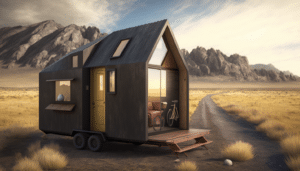 We’ll begin with an examination of Micro Apartments and tiny Homes. These actually come in a variety of shapes and sizes but the general idea remains the same. Builders save on material costs, time investments and land clearing, and homeowners trade the luxury of space for an often times lower cost, low-maintenance space of their own.
We’ll begin with an examination of Micro Apartments and tiny Homes. These actually come in a variety of shapes and sizes but the general idea remains the same. Builders save on material costs, time investments and land clearing, and homeowners trade the luxury of space for an often times lower cost, low-maintenance space of their own.
When it comes to tiny homes, the options are practically endless. At one point, these diminutive abodes may have been considered a hallmark of off-grid, anti-social living. But now tiny home communities are popping up from California to Florida, Ontario to British Columbia and everywhere in between. With ownership ranging from $50K to the low two-hundred thousands it’s easy to see why. Some tiny home communities even offer the option to rent. This could prove particularly attractive to traditional apartment dwellers who want to live a more suburban or rural lifestyle.
Builders employ a variety of space maximizing techniques to give these small shelters big personalities. Staircases double as multi-tiered storage compartments, or fold against the wall to increase the useable space on the lower level when not in use. Queen and King –sized beds sink into the floor or fold against the wall to maximize space during waking hours. Even entire rooms fold into themselves, to be wheeled away creating an open space when needed, and extra privacy when not.
Micro apartments employ many of the same space saving techniques as tiny homes without giving up the convenience of the big city. Micro apartments also tend to employ a variety of tricks that give the illusion of more space. For instance, the micro apartments at Carmel Place in New York City feature 12-foot-tall ceilings that make the 260-360 sq. Foot units feel much larger and more open than they actually are. Another popular feature in found in many micro apartments are large floor to ceiling windows or glass door walls that open onto a terrace. These fill the tiny spaces with plenty of light and give the feeling of being in a larger outdoor space.
Many residents find that the money they save on rental cost or building and material cost translates to more money for luxuries they couldn’t otherwise afford. Maybe you can own a home and afford that dream car after all.
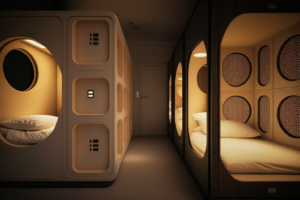 The Asian continent and outlying islands are home to some of the world’s densest populations. Compact living solutions have become a necessity in these countries. But we could learn a lot from their design in the west. Apartments in Tokyo, take the concept of micro to all new levels. 95 sq. foot apartments cost as little as 20,000 JPY ($190 USD) per month. Capsule hotels rent sleeping pods that are little more than a mattress and a light for around $26 a night. This type of living might be impossible for families but for students and those living the single life, these options may be ideal, even allowing them to save enough to buy their own tiny home before graduating college!
The Asian continent and outlying islands are home to some of the world’s densest populations. Compact living solutions have become a necessity in these countries. But we could learn a lot from their design in the west. Apartments in Tokyo, take the concept of micro to all new levels. 95 sq. foot apartments cost as little as 20,000 JPY ($190 USD) per month. Capsule hotels rent sleeping pods that are little more than a mattress and a light for around $26 a night. This type of living might be impossible for families but for students and those living the single life, these options may be ideal, even allowing them to save enough to buy their own tiny home before graduating college!
How would you like to live in Silicon Valley for $800 a month? Impossible you say? Not anymore! Brownstone shared housing in Palo Alto offers a sleeping pod, shared kitchen, and attractive list of amenities, including, free highspeed Wi-Fi, free utilities, onsite laundry, monthly cleaning service and month to month rent with zero security deposit.
As we’ve seen shared resources and a greater sense of community is a natural biproduct of living in these extremely tiny spaces. Tokyo is as much known for its incredible nightlife, and wealth of activities as it is for its micro living quarters. People who work 2nd and third shift might find more opportunity for socialization and enjoying activities typically reserved for those with 9-5 jobs. There’s no reason museums art galleries and amusement parks can’t be open 12-6 AM if there are people willing to staff them. Better still as AI and automation continues to make advancements, less people will have to work these hours to keep the midnight oil burning.
The line city of Saudi Arabia comes to mind. This incredible concept may seem like something out of a cyberpunk movie. but when we consider cities like Dubai, anything is possible.
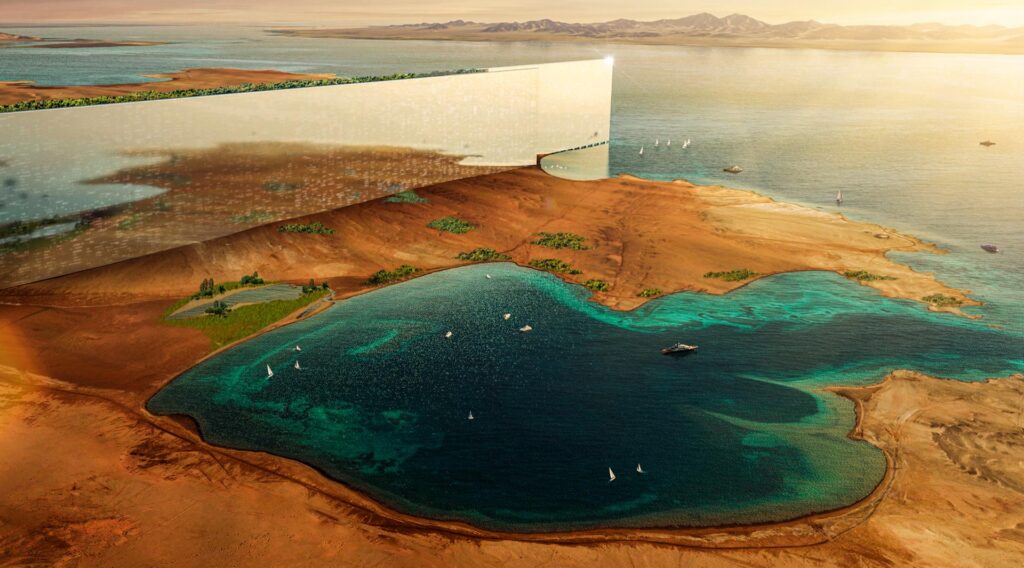
NEOM is a project envisioned and helmed by Prince Mohammed bin Salman. His vision of the future puts Saudi Arabia at the center of map. It’s clear that this project is as much a political venture as anything, but the concepts it embodies are nonetheless progressive, and necessary.
NEOM’s line city is a vision of the future. It’s a concept built around humans rather than industry and a promise to give back to nature more than it takes. THE LINE will feature no cars, no roads, and zero emissions. It will be only 200 meters wide but 170 kilometers long. It plans to accommodate a population of 9 million. Residents will be able to access all facilities within a 5-minute walk and a highspeed rail system will make end to end transit a mere 20 minutes commute. Automated services will be powered by artificial intelligence. Whether this city will ever be built remains to be seen. But even if construction never begins, the concepts it envisions could easily be put to use in new and existing communities worldwide.
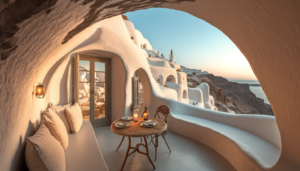 The final concept we’ll examine, takes us back to our beginnings as we look to the future. Even when the Jetsons met the Flintstones, neither family could have imagined the potential of modern cave dwellings. The Earth itself could be our ultimate solution. From Mule Mountains Hideaway in Arizona to the cliffs of Santorini Greece. Cave dwellings are a reality. While they may often be a luxury of the eccentric elite, cave dwellings call back to our primal roots and could be easily adapted to affordable communal living. Easy access to freshwater springs and geothermal energy sources makes them even more attractive.
The final concept we’ll examine, takes us back to our beginnings as we look to the future. Even when the Jetsons met the Flintstones, neither family could have imagined the potential of modern cave dwellings. The Earth itself could be our ultimate solution. From Mule Mountains Hideaway in Arizona to the cliffs of Santorini Greece. Cave dwellings are a reality. While they may often be a luxury of the eccentric elite, cave dwellings call back to our primal roots and could be easily adapted to affordable communal living. Easy access to freshwater springs and geothermal energy sources makes them even more attractive.
If we as a society are willing to rethink and reprioritize, the options for affordable real estate become truly endless. Real estate developers will only embrace these new technologies and concepts if there is a market. So, we need to show them it exists. Thinking outside the box, embracing more communal forms of living and making some small sacrifices could make a huge difference for all life on this planet. The housing crisis we are facing in the west is relatively new, but it’s not the first one we’ve caused. We’ve created this problem for worldwide populations of humans and animals alike for centuries. Now that it’s at our doorstep, perhaps we can finally open our eyes and do something about it.
ADDITIONAL SOURCE

